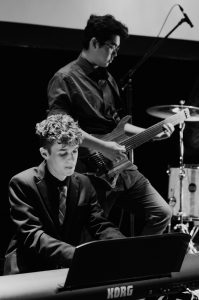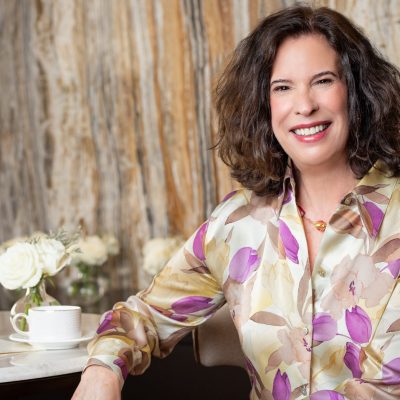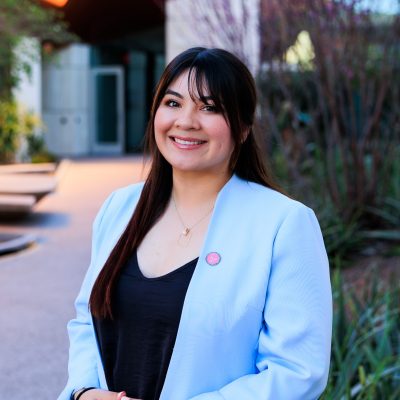Next Doors: Moving Arts & Culture Forward

A new initiative by Virginia G. Piper Charitable Trust funds arts organizations throughout the Valley.
There’s an old saying that if you give someone a fish, they will eat for a day. But if you teach someone to fish, they’ll eat for the rest of their lives.
That philosophy is somewhat unofficially at the core of how Virginia G. Piper Charitable Trust works. They’d probably describe it more as a focus on sustainability, but you get the picture. Piper Trust is known for being particularly hands-on for a funding entity — most major philanthropic trusts will give money, then get a report back on its impact. But Piper Trust has always looked beyond that.
“They’ve done so much for us on all aspects,” said Jackie Hammond, the producing artistic director of Musical Theatre of Anthem, which does a variety of performances and classes in theater and dance for ages 3 to adult. “They’re not just like, ‘Here’s money.’ They say, ‘How can we help you thrive?’ They see what we’re doing and appreciate it.”
Hammond should know. Her organization is a part of a new Piper Trust initiative called Arts & Culture Forward, which aims to increase support for smaller community arts organizations; larger arts organizations will also be part of the initiative.
Piper Trust had previously focused on support for the larger arts and culture organizations in Maricopa County because of their impact on the Valley’s overall quality of life. But over the past few years — particularly during the pandemic — Piper Trust shifted its focus to include smaller groups as well, particularly ones that reach underserved populations and focus on community engagement.
“This came about during COVID, when we stopped doing our regular work,” said Ellen Solowey, senior program manager for Piper Trust. “We paused our usual grantmaking process as the Trustees and Trust felt we had to act swiftly and get grants out to the nonprofit community. After two years of that, the sense was that we’re not going to do any more COVID emergency grantmaking. However, COVID isn’t done, especially with the arts sector. It experienced the largest drops in demand, revenue and staffing of any part of the nonprofit sphere. It was a huge shock to arts and culture.”
 The difference in approach for Arts & Culture Forward may seem a little bit inside baseball, but it’s vital. In most grant-giving situations, funders are giving money for specific programs or services. But with Arts & Culture Forward, Piper Trust is giving general operating funds for a three-year period to organizations it has vetted and trusts. That may not sound like a big deal, but in the nonprofit world, it’s seismic. Solowey went so far as to call grants like this “the holy grail of funding.”
The difference in approach for Arts & Culture Forward may seem a little bit inside baseball, but it’s vital. In most grant-giving situations, funders are giving money for specific programs or services. But with Arts & Culture Forward, Piper Trust is giving general operating funds for a three-year period to organizations it has vetted and trusts. That may not sound like a big deal, but in the nonprofit world, it’s seismic. Solowey went so far as to call grants like this “the holy grail of funding.”
“We can put the fiscal support they are providing where we need it most, which for us is developing infrastructure and really making sure that our programs are meeting the wants and needs of our community,” said Regina Nixon, the executive director of the Phoenix Conservatory of Music, a 23-year-old nonprofit that provides music education programs and performance opportunities for children and adults. “For us, that also means looking at the future — I’m actually a Piper Fellow, and we’re looking at how to grow a post-pandemic staff and have the workforce of today.”
Arts & Culture Forward places a new focus around what Solowey cited as organizations that focus on unfamiliar art forms, ethnic voices or in farther geographic areas from the central city, as well as ones that center their missions on specific populations, low-income households, people of color, differently abled people, and of course youth.
The smaller organizations are defined as having less than $1 million in their annual operating budget, and right now, of the 47 arts organizations that Piper Trust funds, 21 of those are in that smaller category — a number that has doubled in the past decade.
“It really comes down to trust, and trust-based philanthropy,” Solowey said. “Sometimes giving can be uneven — we have all the resources in the funder’s seat, and as a result, the relationship is unbalanced. Trust-based giving puts the nonprofit in the driver’s seat. All these organizations are ones we have known for at least a decade, and we feel quite comfortable with them deploying resources as they see fit.”
For Dr. Lawrence Bell, the executive director of the Arizona Jewish Historical Society — which celebrates the history and heritage of the Jewish community in the Valley through exhibits and programming at a historic building in downtown Phoenix — the program is about building a better future for the arts in the Valley.
“Phoenix is lucky to have them. We do not have a lot of philanthropic foundations of the size and capacity of the Virginia G. Piper Charitable Trust,” Bell said. “You see their name everywhere, but I’m not sure the community is always aware of the great work they do …. They prop up a part of the community that doesn’t always get attention in terms of arts and culture.”
To learn more, visit pipertrust.org.






